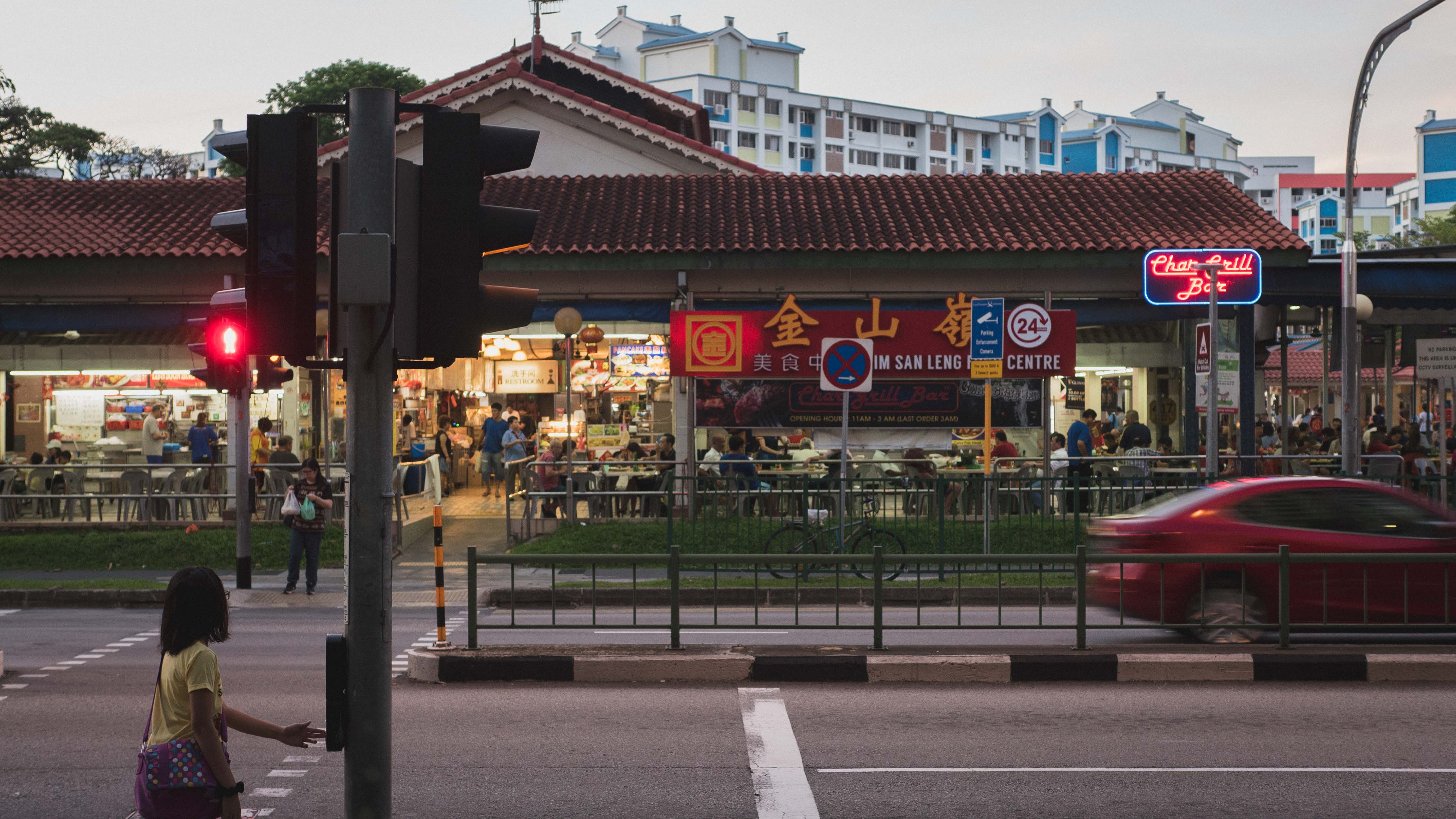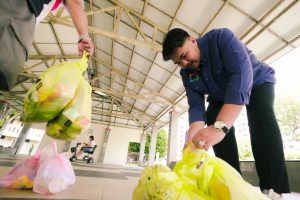He can’t remember when the coffee shop opened; he can’t remember a time when it was not a part of his daily life. Like clockwork, the drinks stall auntie brings him his usual order whenever she sees him, without him having to ask.
I ask him how he would feel if the coffee shop were to close down abruptly.
“It’s just a coffee shop,” he shrugs.

Then, when we are satiated, the coffee shop quietly recedes into the background.
Clearly, much of our lives are woven into, and with, the fabric of the coffee shop. But are we too indifferent to it, taking the coffee shop for granted as an ever-present institution?
In my quest for answers, I make a pilgrimage to the most magical site in Singapore, Yishun—and not its central hub, where I get lost repeatedly in the labyrinth of Northpoint City—but to a Kim San Leng “in the armpit of Yishun”, as my editor puts it endearingly.
Here, in the outskirts of the north, with its lack of monolithic, fluorescent malls that homogenise the landscape (I’m looking at you, Northpoint City), the coffee shop takes on additional importance as a social and cultural centre where ugly food and unvarnished conversations are kept alive.
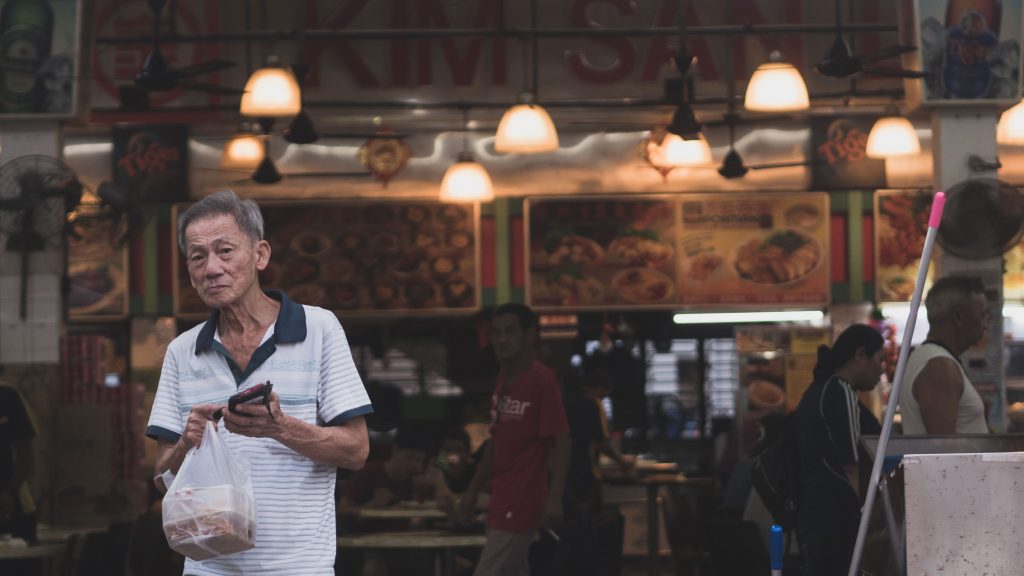
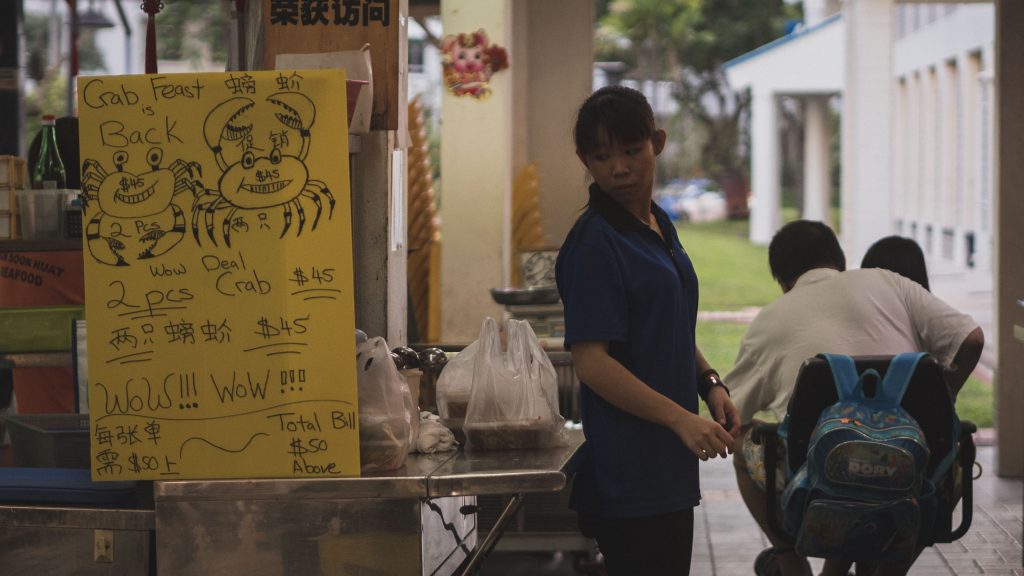
I settle into a chair, and to justify my hours sitting here being a voyeur, order a cup of teh c peng kosong from the drinks stall auntie.
An elderly couple in their 80s or 90s, wisps of white hair caressing their scalps, is having Teochew porridge from Hai Hong Economic Rice and Porridge. The man’s hands are trembling; the woman patiently picks out the flesh from a whole fish and places them in his spoon.
A toddler is sitting on two chairs stacked on each other, his legs swinging like a steady metronome, his hand grasping a bowl of hot fish ball soup as he sips it gingerly, his mother’s eyes never leaving him.
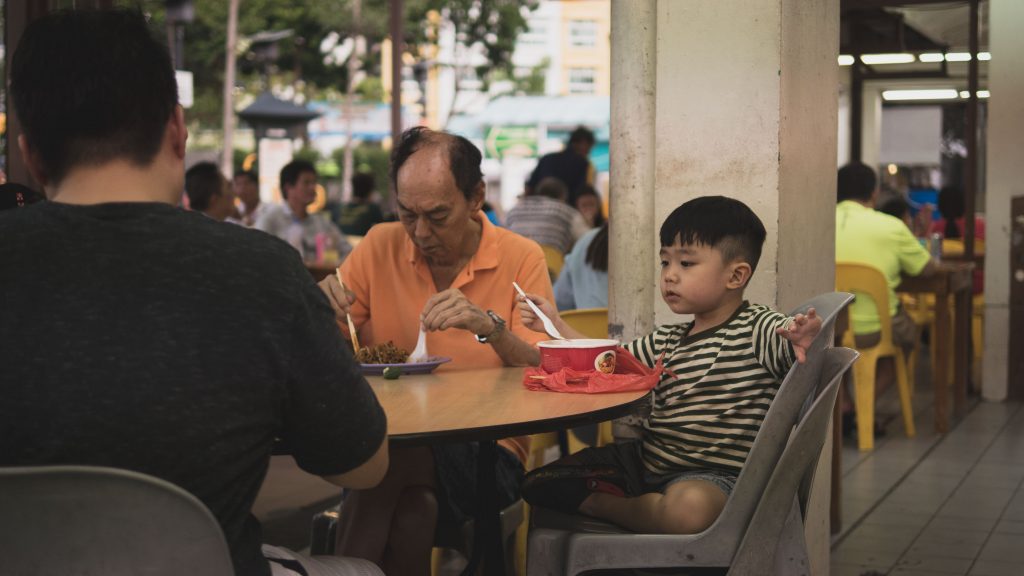
A body composed of biceps and pectoral muscles, clad in a distinctive red and blue singlet, da baos a packet of cai fan.
An aged gentleman, who has been staring into space for the past ten minutes, suddenly has an animated conversation with a lady who joins him at his table. Their chat dissipates as quickly as it had begun; the lady gets up and I realise that she is not his companion, but one of the many drinks stall aunties.
Nevertheless, they part with a faint smile.
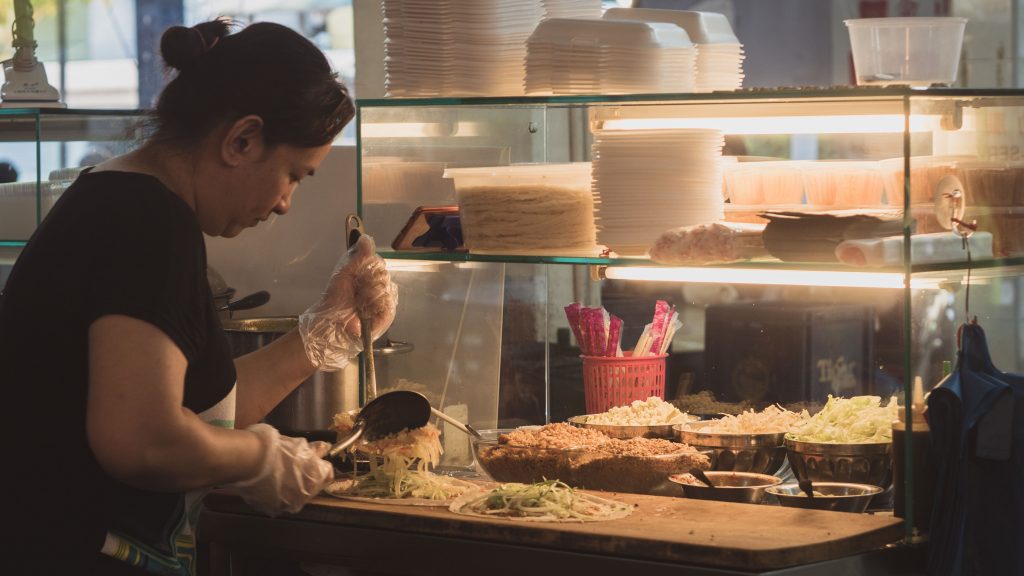
I eat a delicious roll of popiah and make conversation with the popiah auntie. As a popiah connoisseur, I am surprised to find out that Ah Yen is a first-time hawker who has been rolling radishes for only 6 months. She used to be a blue-collar worker, but decided to take over a vacant stall here—she only discovered the opportunity because she herself, living ten minutes away, was a frequent patron of the coffee shop.
It’s clear that she enjoys this line of work; she replies all my questions about the job and environment with “xi huan” (I like), and I know she’s not merely being polite because her eyes are smiling. Later, I observe her joking around with her more familiar customers. Catching my eye, she explains that 90% of her customers live around the area, so she has gotten to know many of them even within this short span of time.
I try to talk to the other stall owners, but they barely have time to step away from their fiery woks and vats of bubbling bak kut teh (wrapping a popiah is decidedly less dangerous than tossing rice above the flames of Mount Doom).
This is a busy time not just for the stall owners, but the patrons too. Most are families having zi char from Lian Soon Huat Seafood with the usual repertoire of dishes: sambal kang kong, tie ban dou fu, ko lo yoke—a template for the universal zi char dinner. One or two have taken advantage of the WoW!!! offer of 2 pcs Crab for $45. They eat, and they talk.
At the smoking section of the coffee shop, ah gongs are drinking their Tigers, their Anchors, regaling each other with tales of conquest and disgruntlement, and beer ladies are deftly flicking metal beer caps open with the almost imperceptible twists of their wrists.
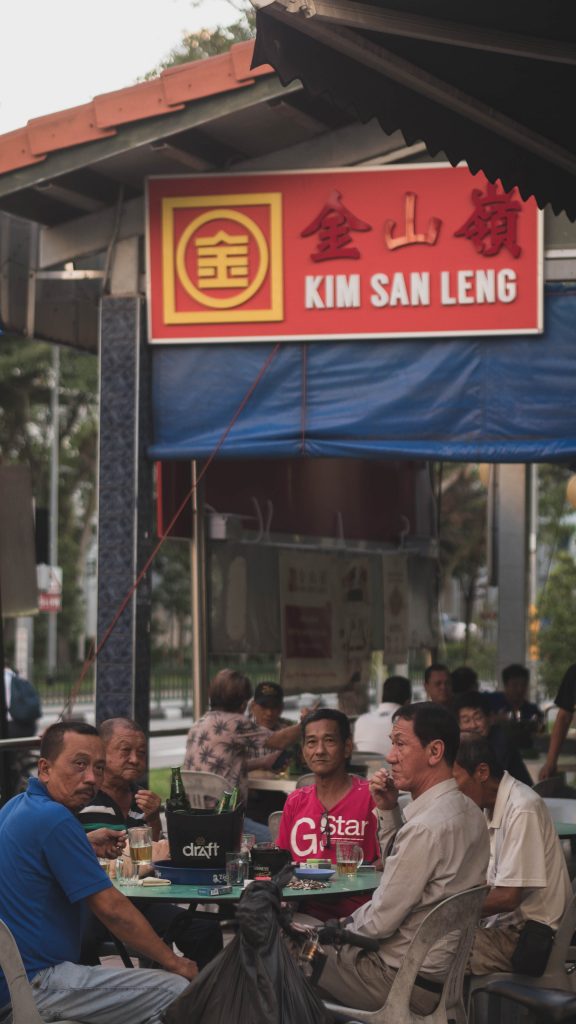
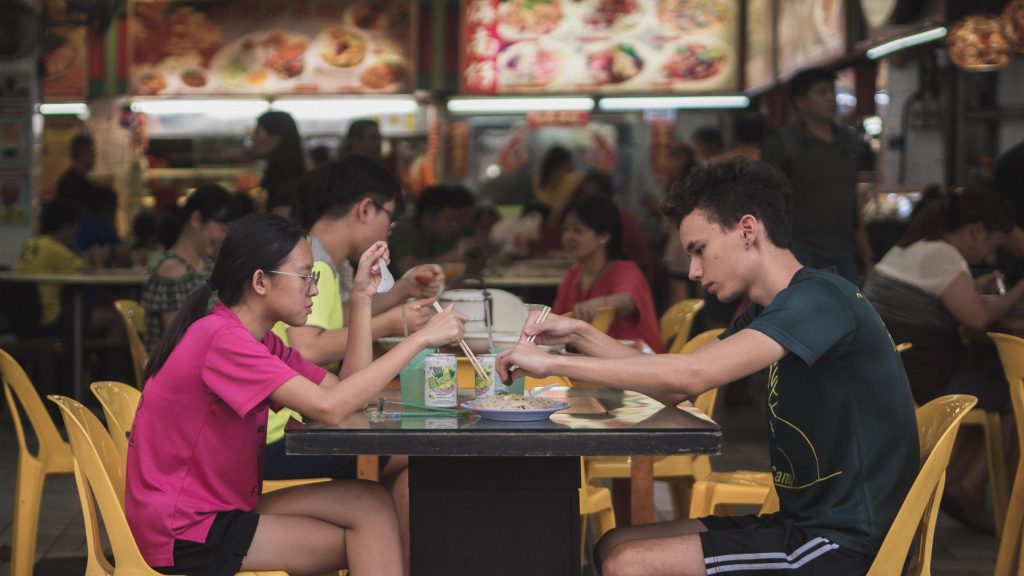
So I decide to take a break from accosting people. I order a bowl of fish soup from Lian Soon Huat Fish Soup for dinner and hang around the stall, but the uncle commands me to sit. Later, he personally brings me my meal and I pay him at the table. It’s both an oddly moving and nostalgic gesture: I had forgotten that this was the way coffee shops used to operate before the whole self-service paradigm took over.
The fish soup—with its stall front bereft of any photographs of celebrities, certificates that it is Singapore’s Top 100 Best Food, Michelin Stars—is … perfectly adequate. Ok la, not bad, can eat.
But when I’m done, the bowl is completely empty.
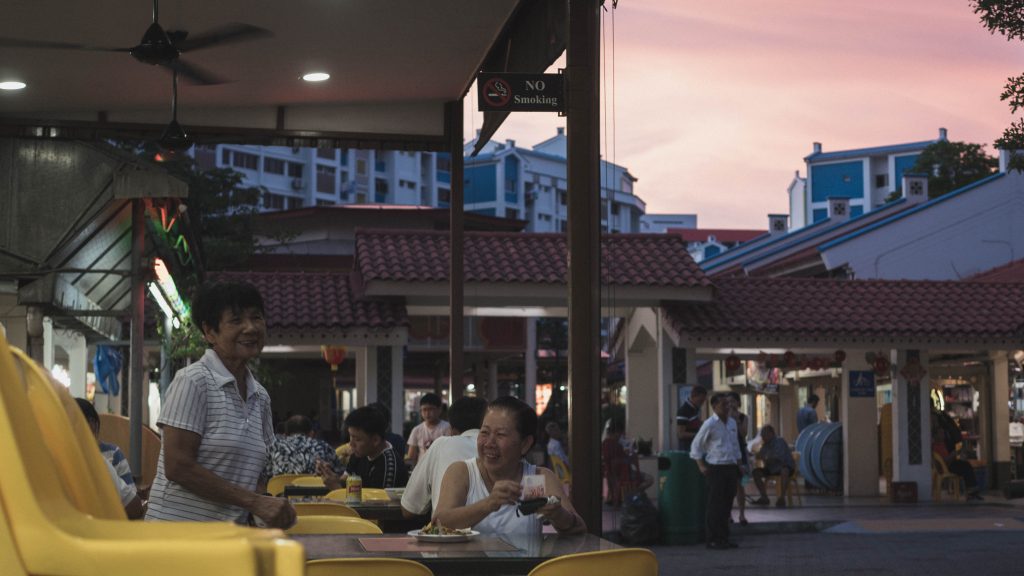
But what is a coffee shop—and, more to the point—what is this coffee shop and its significance to the people whose lives intersect with it?
From these observations and conversations conducted through the course of a day, I conclude that the Kim San Leng at Yishun is:
A space of slow time where the elderly can tend to each other. A quick refuelling stop for housewives after grocery shopping. A private family affair. A social nexus. A replaceable, utilitarian location. An opportunity for livelihood.
This is hardly a unifying narrative. This coffee shop is a bundle of seemingly contradictory meanings.
But I also realise that this indefinability is the beauty of the place: the coffee shop allows for the simultaneous co-existence of these conflicting and overlapping needs and desires.
In other words, the coffee shop is a space brimming with possibilities. It can be everything and anything to everybody at once because there is no logic of exclusion within the coffee shop; it is large and contains multitudes. It’s as if the coffee shop were an ever-evolving answer to our needs, like the room of requirement in Hogwarts.
And this is how universality is achieved—not by being a VivoCity-sized building that houses every shop and facility imaginable, but by allowing people of all backgrounds and social classes to use the space as they see fit. This is why we sometimes pay so little attention to the coffee shop despite its looming presence in our lives: when something is always there, always what you need, you tend not to see it.
For me, coffee shops bring out my best self. In here, I am always a fresh-faced ah boy and a shuai ge (not mutually exclusive), and I am never hangry nor broke.
For the residents of the neighbourhood, the meanings that they have inscribed onto this Kim San Leng seem deeper, more profound, and more varied.
Perhaps it’s because of the lack of megastructures around the location that hyper-specialise in fulfilling a specific need. Or perhaps it’s because the coffee shop has been such a long-standing institution that, like Kerry, they can’t remember when it was not a part of their lives such that it’s now the de facto place they go to for food, socialising, and community interaction.
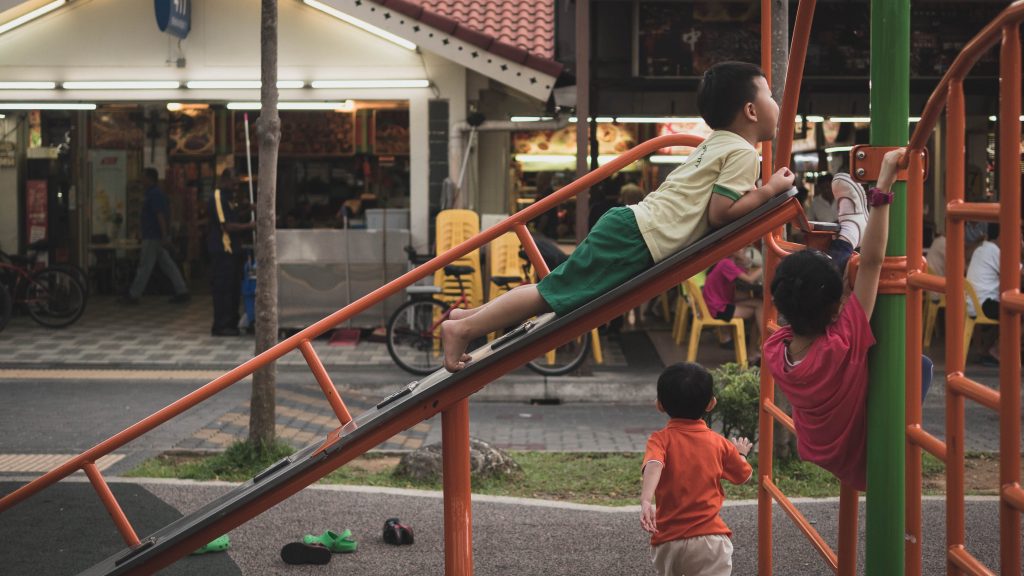
Kim San Leng is one of the oldest coffeeshop chains in Singapore, having been in business since the 1950s. Today, they have over 30 outlets islandwide, and have launched an in-house delivery service where you can get delicious local delicacies delivered to your doorstep.
Want to lim kopi with us? We’re available at community@ricemedia.co.

